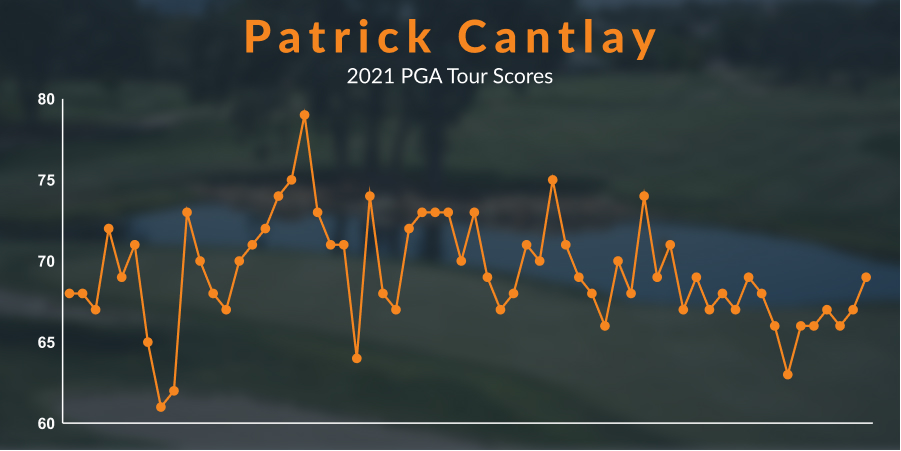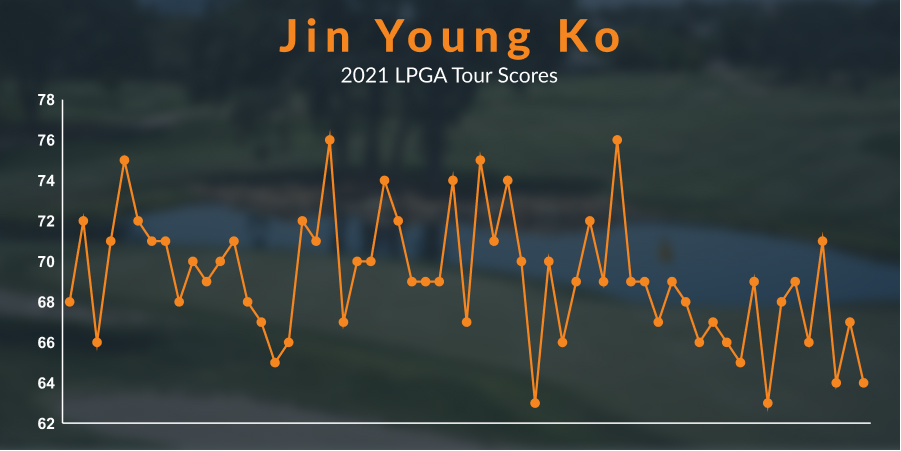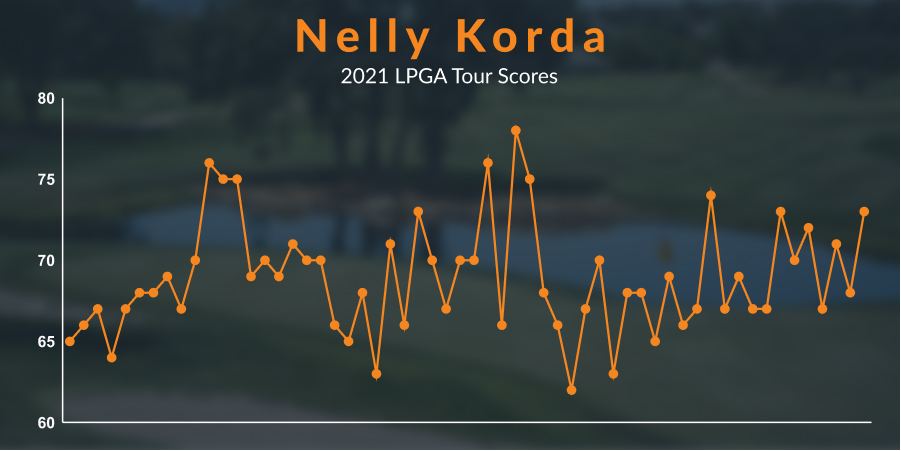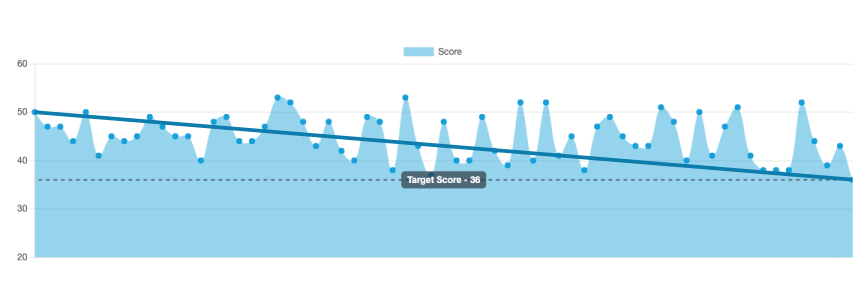
We have all been there and have all made this statement at one point in our golfing careers; “I want to be more consistent.” If you are a parent you have probably asked your junior’s coach how they can become more consistent. As a former full-time coach, I have heard both of those statements more times than I can remember, and on the surface, those statements make a lot of sense. But what if I told you that by chasing consistency you are most likely limiting yourself and/or your junior’s golf game. I know it sounds crazy but bear with me. I promise that after you are done reading this article you will change the way you look at improving at golf.
Yes, and no. I know that seems like a vague answer and well, it is, but let me elaborate. Before we can settle that question we need to clarify what qualifies as being consistent. From a golfing perspective, I think we can all agree that being consistent would consist of shooting similar scores every time we played.
Personally, I think the issue that most golfers have is they think that being consistent is shooting similar scores to their “normal,” BUT never shooting more than 2-3 shots above their handicap. That is a recipe for disappointment and complacency! Let’s take a deeper look at why.
Below we are going to look at 4 different tour professionals’ scores from 2021. Those pros include Jon Rahm, Patrick Cantlay, Jin Young Ko, and Nelly Korda. To find out how consistent they are we are going to look at 3 different stats. Their score ranges, consistency rating, and the percentage of time they shoot outside of their consistency range.
Would you believe me if I were to tell you that the average difference between the Top 10 PGA and LPGA tour players' best and worst scores over a year is 14.45 shots? Well, it is true. First, let's look at the men’s World #1 Jon Rahm. In 2021 you can see below that his best score was 63 and his worst score was 76.

Okay how about the 2021 PGA Tour Player of the Year Patrick Cantaly? His best score during the 2021 season was 61 and his worst score was 79.

Now let's look at the LPGA. First, we will look at World #1 Jin Young Ko’s 2021 season. Her lowest score was 63 and her highest score was 76.

Still not convinced? Let’s look at one final player, World #2 Nelly Korda. Her lowest score from the 2021 season was a blistering 62! Her highest score was 78, and that was on a Par 71.

To find this out I am going to use a stat I will be calling their consistency rating. Their consistency rating was determined by finding their standard deviation from their average score, the lower the score the better. Whatever that standard deviation was is what I am calling their consistency rating. Let’s look at our four players again. Jin Young Ko had a consistency rating of 3.10, while Nelly Korda had a rating of 3.46. Jon Rahm, who had one of the best seasons in recent history, had a consistency score of 2.91, while Patrick Cantlay had a rating of 3.33. This means that on average these four players, which are 4 of the best golfers in the world, will shoot a score that is ~3 shots below or above their average the majority of the time they play.
Finally, let's look at how often each of them shot outside of this average during the 2021 season. Jin Young Ko shot outside of her “average” zone 22% of the time, while Nelly Korda shot outside of her zone 29% of the time. Jon Rahm was outside of his zone only 20% of the time, while Patrick Cantlay shot outside of his zone 27% of the time.
I know that is a lot of data and numbers to look at. We will dive into what that means for your game in the following sections.
First, you need to set realistic expectations for yourself and your game. This is especially true if you are looking to get better and shoot lower scores. The best players in the world are not even as consistent as what I hear most recreational players asking to be! If we took the average numbers from their ratings and applied them to someone who shoots 90 for 18 holes on average that would mean that their consistency score would be ~4 and they would shoot outside of their range 25% of the time. So, if this player would play 100 times a year that means they would shoot outside of their normal range 25 TIMES.
Next, understand that this example is skewed because the average person is not going to have the ratings even close to those of a PGA or LPGA tour player. My only hope is that seeing this info allows you to understand that you are asking too much of yourself if your goal with golf is to become more consistent! What you should be looking to do is to become better. The better you become at golf the lower your average score, consistency score, scoring range, and the number of times you shoot outside of your average range will be.
The number one thing that you must do if you want to become better is to track your progress. Most golfers do this by having a GHIN handicap, but you can also use the Op 36 Golf App to track when you play if you are part of an Operation 36 program.
The second thing you must do is only focus on the trend and not the individual scores or what I like to refer to as noise. For example, if you have ever tried to lose weight or gain weight you know that weighing yourself every single day can be a roller coaster of emotions. There are some days where you are making progress and then other days you are regressing, or so you think. The noise is the ebb and flow of your scores.
You are going to have good and bad days when you play golf. That is inevitable. The key that we are looking for is that over time your trend of scores is going down. Here is an example of exactly what I am looking for as a coach.

This is a graph taken from the Op 36 app, with the trend line added on after, and as you can see there is a lot of noise with the scores going up and down, but the overall trend from the start to the finish is going down. That is progress!
As we saw above even the best golfers in the world are not consistent based on the definition that most golfers think of. It is time for you to change your mindset and start looking to get better over time versus focusing on each individual score.
I want to leave you with a quote to help summarize this article:
“There are no mistakes in life, just learning opportunities.”
Robert Kiyosaki
Your golf game, my golf game, your junior’s golf game, and even the world's best golf games are full of mistakes. Use them as a chance to learn and remember, you want to get better at golf, not to get more consistent.